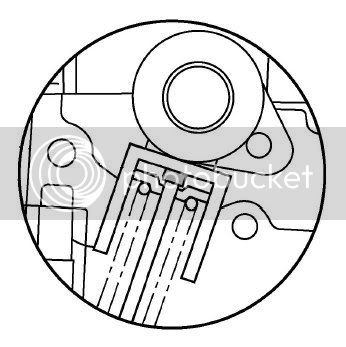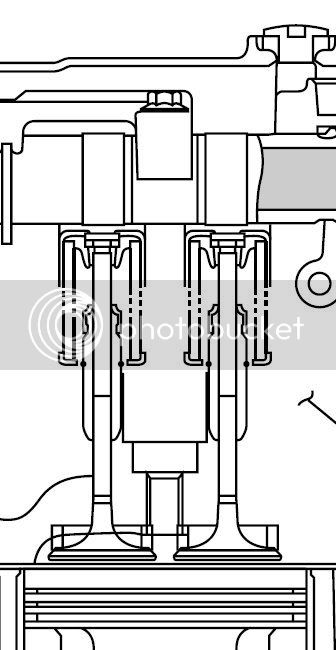fossilrider
Well-known member
Not sure if this will help but there is a website in the U.S. which you can submit a request to, they tie together numerous bike salvage yards.
U.S. Bike Salvage
john
U.S. Bike Salvage
john

Just curious, since mechanical function of engines is fascinating to me, but if you might, can you explain the mechanism that would cause this? In my mind, and not having had the valve cover off an FJR, I'm imagining that if it's the cam lobes doing this damaging "bucket driving", the cam timing shouldn't matter. I get it that the valve train between the rising piston and cam lobe is being crunched hard, but I'm obviously missing the connection as to how the out of time piston and camshaft actuated buckets and valves would cause the buckets to be "hammered in". Hammered into the head?The mechanic says that the BUCKETS were driven into the cylinder head almost .250” ouch, ouch, ouch. First order of business is to inspect the cylinder head for splits resulting from the buckets being hammered in. If it passes this inspection, then they will measure the valve guides on the intake side.
I would imagine the cam lobe opening the valve, while piston attempts to close it, would produce the desired effect. On a pushrod motor, bent pushrods, broken rocker arms, collapsed lifters are the usual result. Irresistible force, immovable object and all that.My sympathies -- this hurts! I've been following this thread, and thinking that this has to be one of the most gut wrenching mechanical failures on an otherwise sound bike that I've read about in a while. While it probably drives you most nuts (it would me) that it happened while you were working on it in the garage, thank God it didn't happen while you were riding it. A question, however.
I follow all of this, except the following:
Just curious, since mechanical function of engines is fascinating to me, but if you might, can you explain the mechanism that would cause this? In my mind, and not having had the valve cover off an FJR, I'm imagining that if it's the cam lobes doing this damaging "bucket driving", the cam timing shouldn't matter. I'm obviously missing the connection as to how the out of time piston and camshaft actuated buckets and valves would cause this.The mechanic says that the BUCKETS were driven into the cylinder head almost .250” ouch, ouch, ouch. First order of business is to inspect the cylinder head for splits resulting from the buckets being hammered in. If it passes this inspection, then they will measure the valve guides on the intake side.
Hoping for the best news in todays diagnostics for you.











Yeah, all that makes sense to me, and is what I would expect, Rad. I guess I'm missing the bucket into head part, though. Is it fracturing and hitting the head around the valve guides as a part of that train wreck, and what is actually driving it into the head? Surely not just the lift of the lobes, since timing would not seem to matter there. The train wreck you describe obviously must be the cause; I'm just wondering how the head gets the brunt of that wreck instead of the valve train.I would imagine the cam lobe opening the valve, while piston attempts to close it, would produce the desired effect. On a pushrod motor, bent pushrods, broken rocker arms, collapsed lifters are the usual result. Irresistible force, immovable object and all that.



A starter motor has the gearing and torque that when applied is not only able to spin a high compression engine like it's nothing, but also has the strength to tear an engine to pieces if things aren't in their right place. Sure a starter may eventually lock up from being bound, but by that time when something like this happens, it's all over. Now, If the CCT went out and allowed the chain to jump two teeth on the sprocket while the engine was running, they only thing left would be pieces of aluminum and what ever other metals are in the engine. These engines for the most part are aluminum, and yeah aluminum is strong and light in weight, but it can only stand so much abuse before something bad happens.hmmIf I recall you described the initial bang and clunk under starter motor, The engine didn't actually fire. (of course when the valves are open as the spark occurs)
Getting to the point quickly.
I would expect damage on the piston crowns, I would not expect bottom end damage. The FJR I believe runs lead bearings for bigends.
Of course what choice do you have but to listen to the pros but I would think
1. Remove any buring on the piston crown.
2. Check the Cams aren't bent (if so bend them back or replace them)
3. A complete head rebuild is in order (possibly a new head, but I doubt it)
Maybe consider the minimalistic approach to repairing this.
Just how much damage can the starter motor do.. This engine wasn't even running when piston and valve met.
Anyway just my 2 bobs worth.
Once again very sorry to hear about this nasty issue and best of luck with resolving it..
Wife or bike ????....................... worse yet you should hear my wife bitch about loosing her fall riding.
I wish a loaner was a prospect!